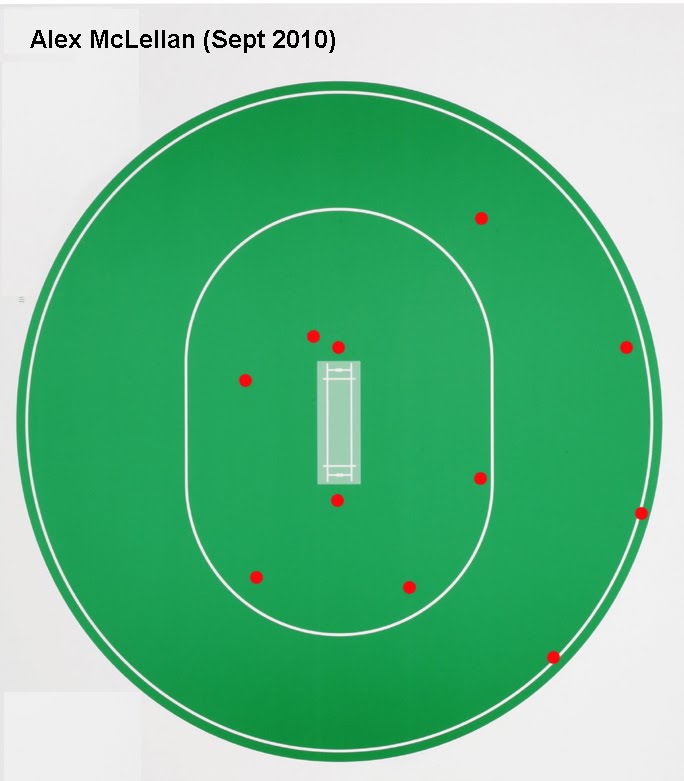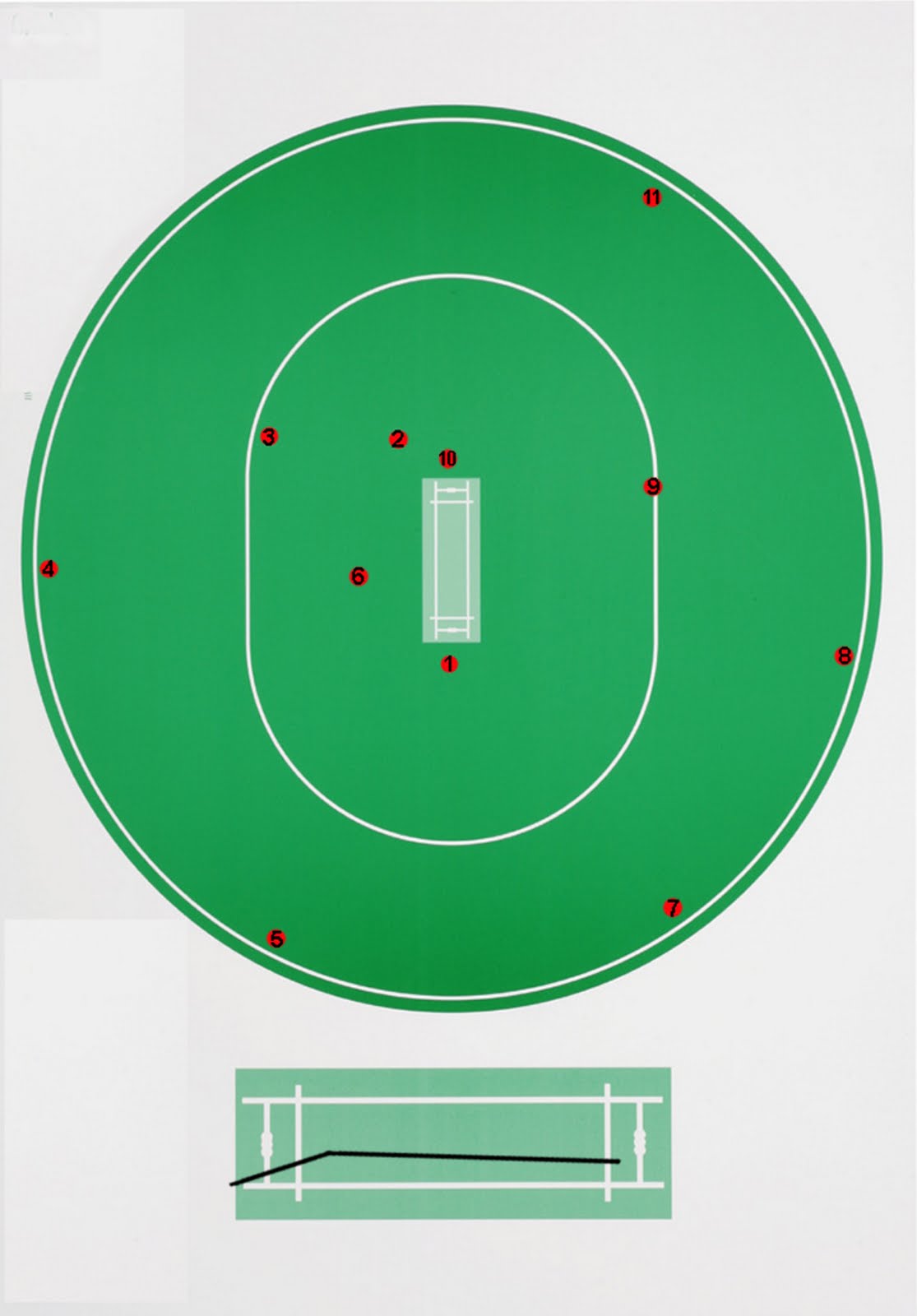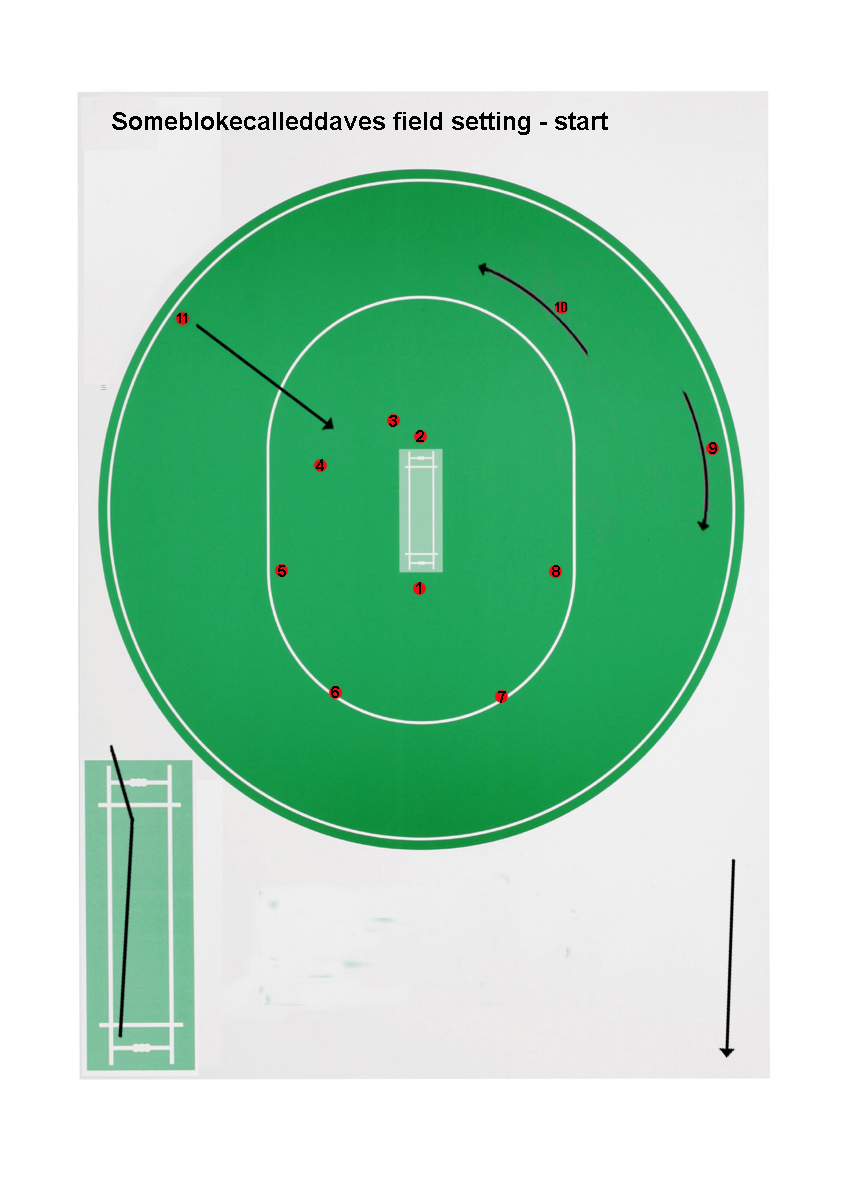shashivardhan
Active Member
Here's the first one. This field was set for me, by the captain Alex McLellan Sept 2010. Initially I didn't get it as he put it into place, but he came over as I started by spell and said that he'd been watching both the bats (RH) and one in particular was strong on sweeping across the line of flight (I was coming over the wicket) hitting the ball to deep square leg round to deep mid wicket and rarely played through the off-side or straight. The other was trying to get the ball to the on-side and had a slightly more confident approach to playing straight.
.
mate where s the gully?i think you should have a fielder at silly point


